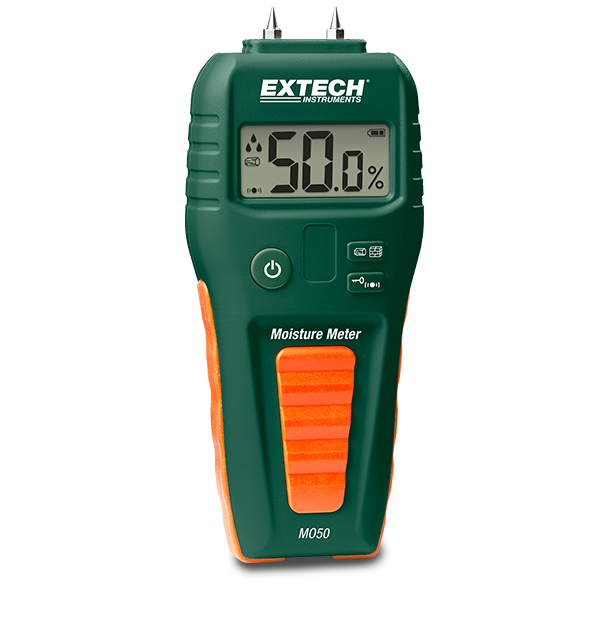Look Into the World of Moisture Meters: Every Little Thing You Required to Know
In the world of dampness meters lies a globe of accuracy and practicality that usually goes undetected. Comprehending exactly how moisture meters run, the different kinds readily available, and their varied uses can lose light on their relevance in guaranteeing top quality and effectiveness.
How Moisture Meters Work
Moisture meters operate by determining the electrical conductivity or capacitance of materials to identify the moisture content present. These meters are very useful tools across various markets, consisting of woodworking, farming, and building. By using different techniques such as pin-type or pinless innovation, wetness meters offer accurate readings that assist experts make educated choices.
Pin-type wetness meters function by putting the sharp pins into the material being examined. On the various other hand, pinless wetness meters use electro-magnetic signals to scan a bigger location without triggering any kind of damage to the material's surface.
Regardless of the approach used, wetness meters play a vital function in protecting against problems such as mold and mildew growth, structural damage, or product problems triggered by excess dampness. Recognizing exactly how these meters job is essential for making certain the top quality and integrity of materials in numerous applications.
Types of Moisture Meters
Given the vital role wetness meters play in different markets, it is important to recognize the different types offered to experts for precisely examining wetness levels - Moisture Meter. There are mainly 2 main types of dampness meters: pinless and pin-type wetness meters

On the various other hand, pinless moisture meters utilize electromagnetic sensing unit plates to scan a bigger area of the material without causing any damages. This type is appropriate for quickly scanning large locations and is typically made use of for floor covering, wall surfaces, and ceilings. Pinless meters are hassle-free for taking analyses on completed surfaces without leaving any noticeable marks.
Both sorts of wetness meters have their benefits and are chosen based upon the specific demands of the task handy. Comprehending the differences between these types is vital for experts to make exact wetness assessments.
Applications Throughout Industries
Building experts count on dampness meters to evaluate the wetness levels in building products like timber, drywall, and concrete, which is crucial for maintaining architectural stability and stopping problems like rot or mold. The floor covering sector uses wetness meters to determine the wetness web content in subfloors prior to installing various flooring coverings, stopping expensive damages due to excess moisture. In the food market, wetness meters are used to monitor and regulate moisture degrees in products such as grains, nuts, and dried out fruits to keep freshness and top quality.
Tips for Making Use Of Wetness Meters
Use the dampness meter's calibration settings to make certain accurate readings when determining the wetness web content in numerous products. Additionally, make sure the meter is set to the proper dampness array for the product you are measuring to obtain the most exact outcomes.
When using a pin-type dampness meter, place the pins to the proper depth recommended for the material being tested. This makes sure that the wetness readings are taken from the correct deepness within the material, offering a more exact depiction of its wetness content. For pinless dampness more helpful hints meters, bear in mind to preserve proper call with the material's surface area to obtain reliable analyses.
On a regular basis examine and replace the batteries in your wetness meter to avoid unreliable readings as a result of low power. Shop the meter in a safe and completely dry location when not in usage to extend its life-span and maintain its precision. By following these pointers, you can optimize the efficiency of your dampness meter and obtain exact moisture material dimensions throughout different materials.
Upkeep and Calibration
To make certain click here to read the accuracy of moisture web content dimensions, normal upkeep and calibration of the dampness meter are crucial actions in its correct performance. Calibration readjusts the wetness meter to make sure that it gives regular and trusted outcomes.
Calibration must be done regularly, particularly if the dampness meter is made use of regularly or in important applications where article source specific dimensions are needed. Many dampness meters feature calibration tools or can be calibrated by professional solutions. Moisture Meter. It is recommended to maintain a log of calibration days and results to track the performance of the moisture meter over time. By adjusting the wetness and preserving meter routinely, customers can trust the precision of the wetness content dimensions acquired.
Final Thought

In verdict, moisture meters play an important duty in various markets by precisely gauging the moisture material of products. Recognizing how these gadgets function, the various kinds available, and proper maintenance and calibration are necessary for getting dependable outcomes. Whether in farming, production, or building and construction, the use of moisture meters helps ensure quality assurance and effectiveness in processes.

In verdict, wetness meters play an important function in various industries by properly determining the wetness content of products.